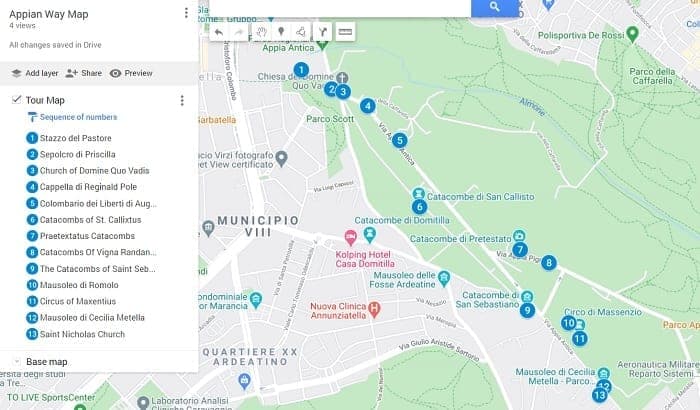This post is about Appian Way, also known as Via Appia Antica, and the various historical sites and ruins you can see along this ancient road.
In addition to going over some of the more notable landmarks in the area, we also help you plan your trip with details about how to get there and what to expect.
Click on the map to open or to download to a smartphone.
PLAN YOUR VISIT
This section will focus on information that will help you plan your trip down Appian Way.
We will cover details such as the best time to visit, how to get here, and what to expect while walking on this ancient road.
How to Get Here
The first 16 kilometres (9.9 miles) of the Appian Way, teh segment that most tourists explore, runs through the Appia Antica Regional Park.
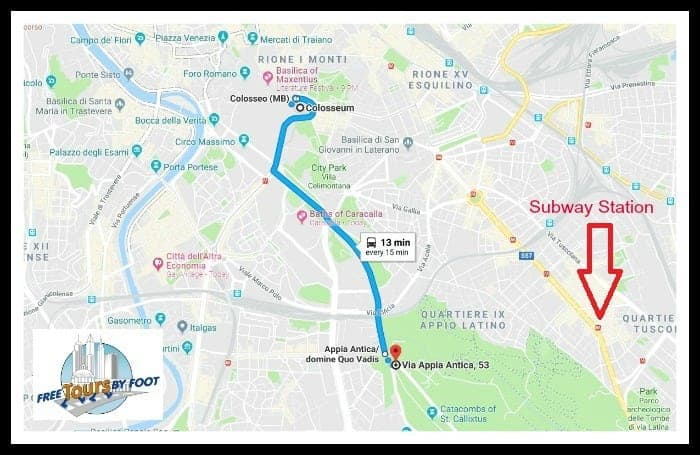
You can easily get to the Visitor Center by public transport. Use this Google Map link for exact directions from anywhere in Rome.
There are two bus lines (#118 and #218) that service the visitor center at the Appia Antica Regional Park. It's just 13 minutes from the Colosseum on the #118.
If you don’t feel like taking the bus, you can also hop on the metro and get off at the Colli Albani/Parco Appia Antica metro stop, though will be on the far end of the park.
Read our post on using the Roman metro system for more details on both services.
If neither the metro nor the bus sounds good to you, you may want to consider using a hop-on-hop-off tour bus instead.
Big Bus Tours offers stops at Appia Antica Regional Park and even drives down Appian Way.
For more information on this service, check out our post about Roman bus tours.
Best Time to Visit
Since this is a public road, you can visit it at any time. But some days and times are better than others.
There are a few details to keep in mind when choosing the right time to walk down Appian Way.
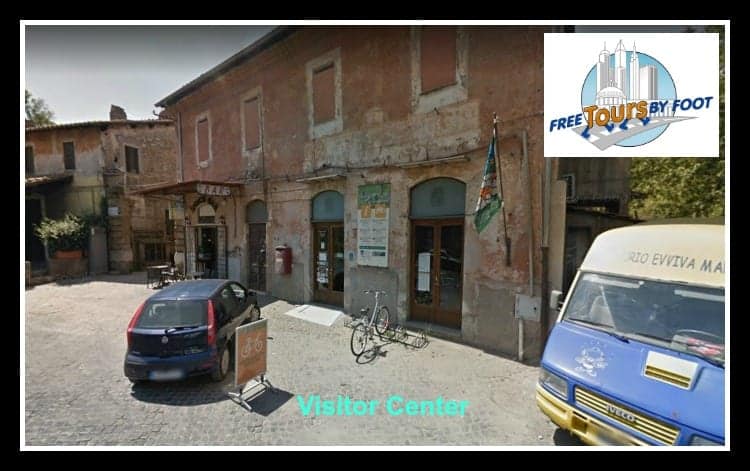
If you plan on going to the visitor center or walking through Appia Antica Regional Park, keep their open hours in mind.
At the visitors center, you can rent bike rentals and get brochures to help you find your way around Via Appia.
Appia Antica Visitor Centre
- Daily 9:30 am - 18:00 (6 pm)
Appia Antica Regional Park
- Weekdays: 9:30 am - 13:00 (1 pm) | 14:00 (2 pm) - 18:30 (6:30 pm)
- Weekend: 9:30 am - 21:00 (7 pm)
Most people will make their trip either in the late morning or the early afternoon, giving them plenty of time to see everything and enjoy the walk.
A sunrise or sunset experience can be equally as rewarding.
If you plan to see Appian Way at sunrise, keep in mind that the park won’t be open.

Even at its busiest, Appian Way rarely gets very crowded.
Most people report that this is a great place to get away from the typical tourist crowds, and there’s plenty of space for even larger groups to enjoy the area without getting in anyone’s way.
If you really want the ancient road to yourself, consider arriving either early in the morning at 9:30 am - 11 am or later in the evening at 5 pm - 6:30 pm (7 pm on weekends).
Another important detail to note is that Appian Way is closed to private vehicles on Sunday.
This will be your best opportunity to experience it as the ancient Romans did, without the sound of vehicles whooshing by.

Visitors hoping for a more quiet experience should definitely consider a Sunday outing, but they can also expect more people on the road during this time as well.
What to Expect
Depending on how long you plan to spend walking down Appian Way, you can expect to be there for at least 1-2 hours in the area.
Some people go even further than usual, and longer trips can last 3 hours or more.
If you plan to walk down Via Appia, it will be important to wear comfortable shoes and prepare for the journey.
You can rent a bicycle, e-bike, or an electric car (golf cart) to travel along the ancient road more comfortably.
Additionally, you can also take a tour that will provide detailed information about both Via Appia and the many sites you will see along the way.
Some tours include bike rentals as part of the service.
THINGS TO SEE ALONG THE APPIAN WAY
There are many historical sites to see along the Appian Way.
Some locations are more popular than others, but you’re bound to see at least a few notable landmarks along any stretch of this ancient road.
With that said, let’s talk about some of the more interesting things to see on Via Appia.
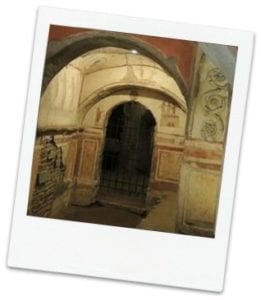
This ancient Roman tomb dates back to the 1st century when it was erected by a man named Titus Flavius Abascanto for his wife Priscilla.
In the 11th century and beyond, the tomb would go on to be used as a fortress.
You’ll find this site situated between two buildings across the street from the Appia Antica visitor center. Here is a video describing the tomb.
If you're interested in seeing more of this attraction, consider taking a tour of the Tomb of Priscilla.

Although this church isn’t exactly ancient, it’ll probably stick out as you begin your walk down Appian Way.
The building itself was constructed in 1637, but there has been a sanctuary on this spot since the 9th century.
It is said that the Apostle Peter used to live in this area, and there is evidence from the Catacombs of St. Sebastian which supports this claim.
It is also believed that this is where Jesus Christ met St. Peter. This church is across the street from the Sepolcro di Priscilla and the Appia Antica visitor center.
Chapel of Reginald Pole
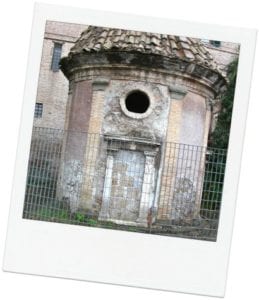
You’ll find this chapel just down the road from the visitor center. It was built in 1539 by Cardinal Reginald Pole.
There are a few different theories for why the cappella was built, but one possibility is that the cardinal thought the Church of Domine Quo Vadis was not where Christ had met St. Peter.
Sadly, the building was abandoned in the 20th century and has been closed off to the public.
Colombario dei Liberti di Augusto

This ancient cemetery was used to house the graves of slaves freed by Emperor Augustus.
It was uncovered and studied in the 1700s, revealing around 3,000 niches built to store human remains.
Oddly enough, despite its original purpose, this location has since become a restaurant.
If you don’t find it too creepy, consider grabbing a bite at the Hostaria Antica Roma!

As you travel down Appian Way, chances are that you’ll notice a few signs directing you to notable locations.
Some of the first signs you’ll see will point you in the direction of these catacombs where several martyrs, early popes and early Christians were buried.
Although it’s not free to enter, tickets are pretty affordable and they are open on almost every day except Wednesday.
If you're interested in seeing or learning more about this site, consider taking a tour of the Catacombs of Saint Callixtus.

This is the next big cemetery on Via Appia and it is notable for being the only Christian burial site that has always been accessible.
Named after one of the three martyrs who is thought to be inside, the Catacombs of St. Sebastian are a popular destination for both the faithful and tourists.
Sadly, this site is not open on Sundays and you will have to pay for admission.
If you want to learn or see more about this attraction, consider taking a tour of the Catacombs of St. Sebastian.
Mausoleum of Romulus
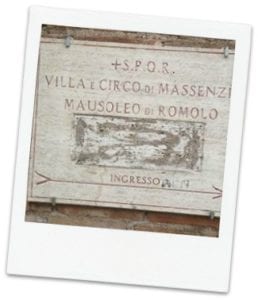
Found on the land of former Emperor Maxentius, this mausoleum was erected in honor of his son Romulus.
Even though the structure has been deteriorating for many years, the walls surrounding this site are still as imposing as ever.
Circus of Maxentius
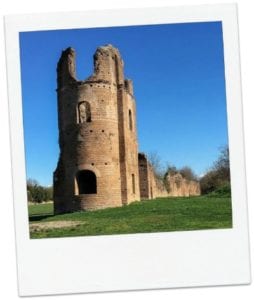
Although it might not be as impressive as the nearby mausoleum, both the circus and palace found here are definitely a sight to behold.
This land and the buildings on it once belonged to Emperor Maxentius. Each structure was originally erected at some point between AD 306-312.
Anyone walking down Via Appia should be able to get a good look at this historic landmark.
Mausoleum of Caecilia Detella

You’ll find this popular destination approximately three miles down Appian Way.
Built during the 1st century, this mausoleum was erected in honor of Caecelia Detella, wife of Marcus Licinius Crassus.
Marcus was himself the son of Marcus Crassus, who served under none other than Julius Caesar.
As with most of the impressive ancient structures on this road, it will be difficult to miss this one.
TOURS OF THE APPIAN WAY
There are a variety of different tour companies in Rome that provide tours of the Appian Way.
Some companies offer walking tours, but others will make things easier with bicycles, e-bikes, or Vespas.
Some services will include admission to certain sites along the way and others will have free transportation to and from Via Appia.
Ticket prices range from €20 - €170 or more.
Tours will typically last anywhere from 3-6 hours, but some can run as long as 12 hours.
Here are a few of the more popular Appian Way tours you can take:
- Hidden Gems & Ancient Wonders
- Walk the Appian Way.
- Trip to Tiber Island.
- See the Pyramid of Caius Cestius.
- Visit Trastevere, Testaccio Market.
- Free pasta & bakery tasting.
- €69/Adults | €64/Children
- Catacombs & Appian Way Walking Tour
- Appia Antica E-Bike Tour
- Appian Way Vespa Tour
- Appian Way Bike Tour
- Click here for more tour options
TIP: The Rome Tourist Card includes 10% off an Appian Way bike tour. You’ll also find admission to various sites along Via Appia included with the Turbo Pass.
For more details, check our post about Roman tourist passes.
Self-Guided Tour
Although there aren’t any audio tours of Appian Way, there is a brochure that you can use as a self-guided tour.
This guide provides a plethora of information about various different historic sites in the area, touching on both big landmarks and smaller locations.
The brochure is available at the Appia Antica visitor center, but you can also download information from their website, including this PDF map.
NEARBY ATTRACTIONS
There are a lot of significant monuments and historic sites near Appian Way.
Many of them are situated right alongside the ancient road, but a few of them are off the beaten path.
If you don’t mind a little extra walking (or extending a bike ride), consider heading to these notable locations.
This historic location was once used as a public bath that was capable of serving hundreds of visitors at a time.
Unfortunately, the building eventually fell into disuse and even became a burial site at one point.
With a history that stretches back over a thousand years, this is one landmark you don’t want to miss.
To learn more about this site, visit our post about the Baths of Caracalla.
Circus Maximus
What was once an area used for chariot racing has since become what is essentially a public park.
Romans today will use this area to walk their dog or get some exercise, but all it takes is a little imagination to envision this arena as it once was.
This landmark is free to visit, so you may want to add it to your itinerary as a low-cost attraction.
The Colosseum, the Roman Forum & Palatine Hill
It’s difficult to miss this popular attraction, but you’d be remiss to avoid it.
Located just north of Appian Way, the Colosseum is yet another major arena where ancient Romans would congregate to watch various events.
Although there are free days, this site can get popular enough that you should consider paying for admission.
Alternatively, you’ll also find this landmark on several tourist passes. If you want to know more, make sure to read our post about visiting the Colosseum.
Roman Forum & Palatine Hill
Admission to both of these nearby sites is actually included for free when you purchase tickets for the Colosseum.
While the Roman Forum was once the heart of government in Rome, Palatine Hill remains one of the best views of ancient architecture in the city.
Museum of the Walls
This archaeological museum is housed in the historic building of Porta San Sebastiano.
Although it was once used as a gateway to the city, the structure now contains exhibits about the walls of Rome and how they were built.
Chances are that you’ll see a lot of these ancient walls while walking down Appian Way, so it actually makes a lot of sense to visit this location.
The Museum of the Walls is included on both the Turbo Pass and the Roma Pass. Read our post about Roman tourist passes for additional information.
HISTORY OF ANCIENT APPIAN WAY
This ancient stretch of road was named after Appius Claudius Caecus, the man who led the construction of the first section in 312 BC.
Like most Roman roads, construction was planned to start just outside of the city.
As a result of this decision to begin at the city and build outward, the term “all roads lead to Rome” was eventually coined.
At first, it connected Rome with Capua, near Naples. It was extended over time, to nearly 400 miles to Brindisi in Southern Italy from where ships departed for Egypt and Greece.
The Appian Way came to be known as the Regina Viarum (Queen of Roads).
It was strategically placed for military purposes during the Samnite Wars and was first used to bring military supplies to Rome.
Appian Way successfully aided the Roman Empire during the Samnite Wars, giving it the edge necessary to keep its forces well-supplied and capable of defeating its enemies.
Since then, the road has been used for several purposes that have become historically relevant.
In 71 BC, thousands of ex-slaves led by Spartacus were crucified along the Appian Way.
Centuries later during WWII, Via Appia would again be used as a major strategic point used by the Allies to try and take Rome.
The ancient road would also be used for part of the men’s marathon course in the 1960 Summer Olympics.
These are just a few of the notable events that have taken place alongside Appian Way, but there are many more that you can learn about by taking a guided or self-guided tour.
Check our tour section above for more information.






